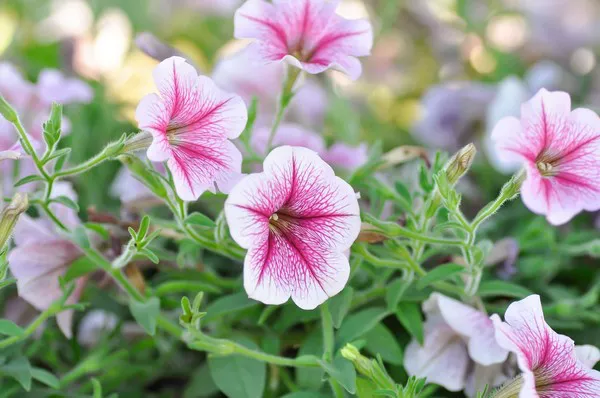Flowers have the unique ability to brighten up any room and add a touch of natural beauty to our lives. However, for those who share their homes with feline friends, the question of which flowers are safe for cats is of paramount importance. Cats are known for their inquisitive nature and, sometimes, their propensity to chew on plants. To create a harmonious living environment for both you and your furry companions, it’s essential to understand which flowers can coexist peacefully with your cat.
The Importance of Flower Safety for Cats
Before delving into the world of cat-safe flowers, it’s vital to understand why this topic is so important. Cats are curious creatures that enjoy exploring their surroundings, which can sometimes lead them to chew on plants. Some flowers can be toxic to cats, causing a range of health issues, from mild gastrointestinal discomfort to more severe, life-threatening conditions. By choosing safe flowers for your home, you can ensure the well-being of your cat while still enjoying the aesthetics of floral arrangements.
A Comprehensive List of Safe Flowers
When it comes to choosing flowers that are safe for cats, there are numerous options available. Here are some cat-friendly blooms to consider:
a. Roses: These classic flowers are non-toxic to cats and can be an elegant addition to your home.
b. Sunflowers: Their vibrant blooms can add a cheerful touch to your space without posing any threat to your cat.
c. African Violets: These small, colorful flowers are perfect for indoor spaces and are safe for cats to be around.
d. Snapdragons: With their unique shape and bright colors, snapdragons are a cat-friendly choice for your garden or home.
e. Orchids: These exotic beauties are non-toxic to cats and can thrive in indoor environments.
f. Pansies: Pansies come in a range of colors and are a safe choice for cat owners looking to add a pop of color to their surroundings.
g. Spider Plants: While not a traditional flower, the spider plant is a favorite choice among cat owners because it’s non-toxic and easy to care for.
Toxic Flowers to Avoid
In contrast to the list of cat-safe flowers, there are numerous toxic blooms that should be kept far away from your feline friends. Some examples include:
a. Lilies: Lilies, in all their varieties, are exceptionally toxic to cats and can lead to severe kidney damage.
b. Tulips: The bulbs of tulips are the most dangerous part, as they contain toxins that can be harmful to cats.
c. Azaleas: These popular garden shrubs contain toxins that can cause severe health issues in cats.
d. Oleander: The beautiful oleander plant contains toxic compounds that can be harmful to cats when ingested.
e. Daffodils: While they add vibrant color to gardens, daffodils can cause vomiting, diarrhea, and other health problems in cats.
Caring for Cat-Safe Flowers
Now that you know which flowers are safe for cats, it’s essential to consider their care. To ensure the longevity of your blooms and the safety of your cat, follow these guidelines:
a. Placement: Keep cat-safe flowers out of your pet’s reach. Place them in high places, use hanging baskets, or create designated areas where your cat can’t access them.
b. Regular Inspection: Routinely inspect your flowers for signs of nibbling or damage by your cat. Remove any damaged parts to prevent ingestion of toxic plant material.
c. Choose Cat-Resistant Vases: Opt for vases and containers that are difficult for cats to knock over or break. Heavy, stable bases are ideal.
d. Cats and Play: Provide your cat with a variety of toys and activities to keep them engaged. This can help deter them from exploring your flower arrangements.
Creating a Safe Floral Environment
While selecting cat-safe flowers is important, it’s also necessary to consider the overall environment. Here are some additional tips to create a safe floral environment for your cat:
a. Cat-Proof Your Garden: If you have an outdoor garden, choose plants that are non-toxic to cats. Additionally, consider creating designated areas for your cat to roam safely.
b. Educate Yourself: Familiarize yourself with the common signs of plant poisoning in cats, such as vomiting, drooling, or lethargy. Knowing what to look for can help you act quickly in case of an emergency.
c. Consult a Veterinarian: If you suspect your cat has ingested a toxic plant or is displaying symptoms of poisoning, consult your veterinarian immediately. Early intervention can save your cat’s life.
d. Alternatives to Fresh Flowers: If you’re concerned about the safety of fresh flowers, consider silk or artificial arrangements as an alternative.
Conclusion
In conclusion, the joy of having flowers in your home doesn’t have to be compromised when you share your living space with a cat. By carefully selecting cat-safe flowers and taking precautions to protect your feline friend, you can enjoy the beauty and freshness of floral arrangements without worry. Always be aware of the specific flowers that are safe for cats and those that are toxic, and take steps to ensure a safe and harmonious coexistence between your beloved pet and the natural world. With the right knowledge and precautions, you can maintain a beautiful and cat-friendly environment in your home.


